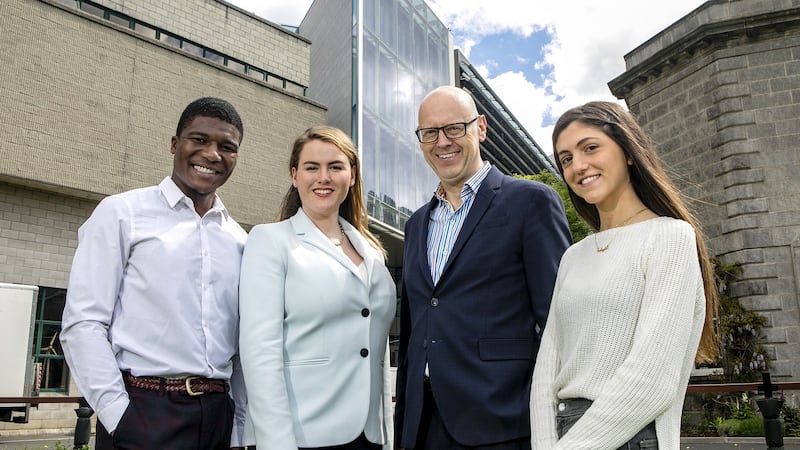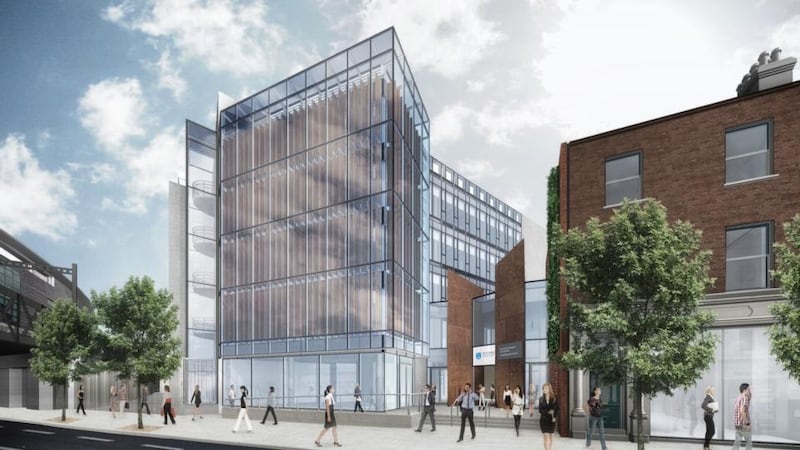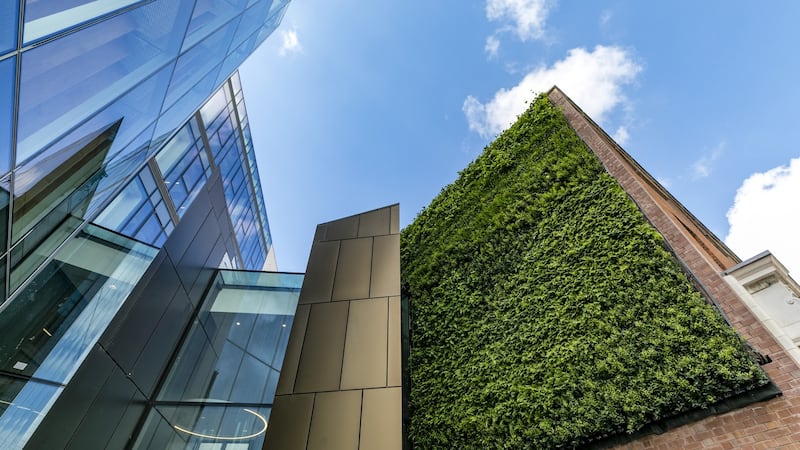1. Trinity Business School is among the fastest growing business schools in Europe with a growth rate of 127 per cent over the past three years. The school has also achieved the highly coveted Equis accreditation which places it in the top 2 per cent of business schools worldwide.

2. The new €80 million 11,400 square metre Trinity Business School building includes an innovation and entrepreneurial hub, a 600-seat auditorium, restaurant spaces for up to 200 people, smart classrooms with the latest digital technology, and a rooftop conference room.
3. The Business School's high growth strategy, which focuses on the development and innovation of new and existing programmes, recruitment of top international faculty and professional staff, as well as diverse students from across the globe has contributed to the generation of new income streams which together with generous philanthropic support from alumni and Irish industry, have led to the new business school becoming the first university building in the history of the state to be funded without taxpayers' money.
4. The new building includes an innovation and entrepreneurial hub which hosts the undergraduate business incubator programme Launchbox.
The summer accelerator programme is open to teams of Trinity students with an early-stage business and provides office space; funding; mentorship; access to alumni, partner and investor networks; and a collaborative environment conducive to the launch of new start-up ventures.
5. A new entrance to the Business School on Pearse Street will deliver a much- needed boost to that neglected area of south inner-city Dublin.

6. The building has been designed to promote the health and wellbeing of users to the maximum extent possible. All workspaces have ample natural light, good air quality and access to natural greenery. A high standard of acoustic design reduces noise distractions contributing to a pleasant and comfortable working environment.
7. Health conscious staff have been given the option of site stand desks to facilitate more active working habits.
8. While delivering an optimal working environment the design also minimises the requirement for maintenance over the lifetime of the building.
9. The building utilises a double-skin facade and central atrium space to maximise the use of daylight and natural ventilation in occupied spaces. This double-skin facade incorporates high-performance glazing with vertical shading elements.
10. Trinity Business School will have the largest "living wall" ever built in Dublin for Trinity College. This 70sq m living wall will be located on Pearse Street and comprise seven different species of plants carefully selected to suit its north-eastern aspect. As well as offering a stunning visual effect, living walls provide a welcome boost to the biodiversity of a facade and are recognised for their potential to add a valuable habitat for nature. Flowering plants provide pollen and attract a range of pollinators including bees and hoverflies and other insects. The living wall holds 96 plants per square metre with species including Liriope muscari, Asplenium scolopendrium, Helleborus niger and Drypoteris affinis.

11. The Business School's southern aspect will be equally environmentally friendly and green due to the installation of a very large Brise Soleil. These planted horizontal brise-soleil screens reduce heat gain within the atrium space of the building by deflecting sunlight. The screens are planted with a totally different set of species to the living wall, including Rosmarinus officinalis, Erica carnea and the award-winning Geranium "Rozanne".
12. Sustainability is at the heart of the new building and key design features include low energy ventilation systems, motion and time-controlled LED-based lighting and rainwater harvesting. Some 500sq m of photovoltaic panels are installed on the roof contribute to the electrical provision of the building and offsetting 35 tonnes of carbon per annum. Water for toilets will be provided by recycled rainwater.
Trinity has set about making a world class business school and now ranks in the top two per cent of business schools worldwide. Now amongst the fast growing business schools in Europe, its new facility opens on Thursday, May 23rd.











